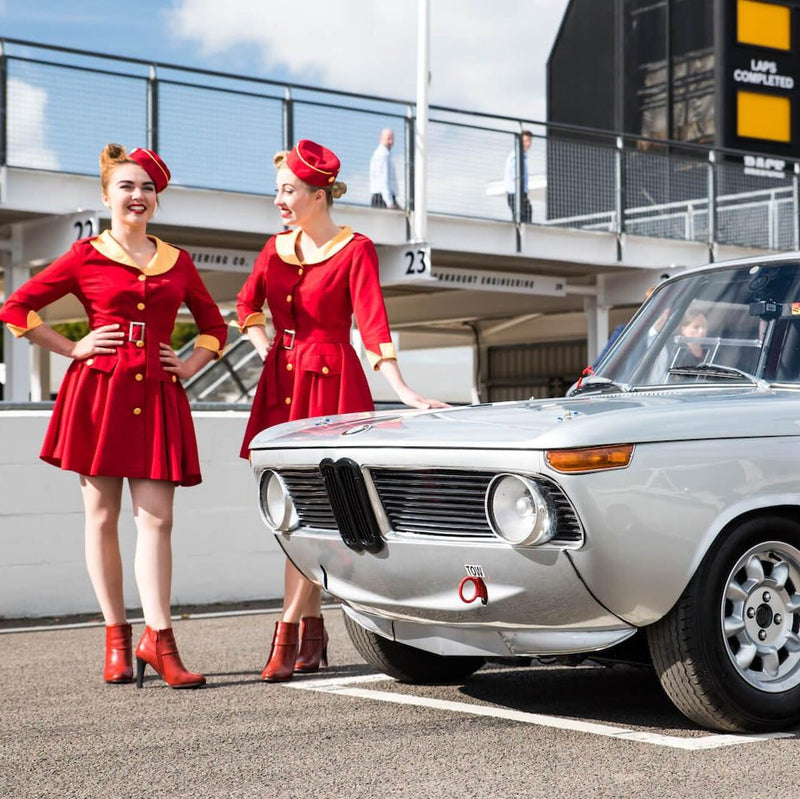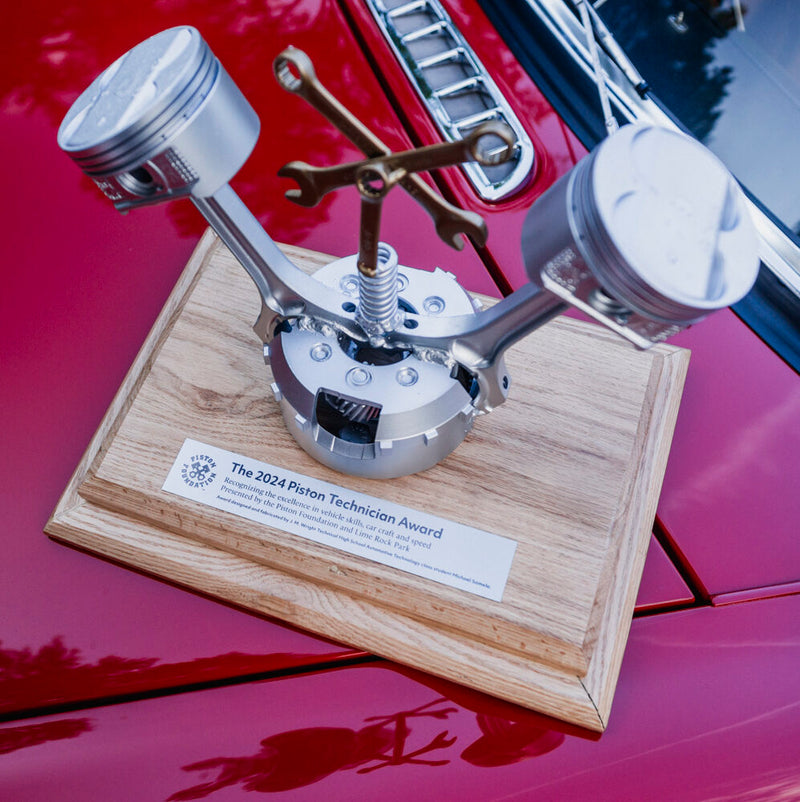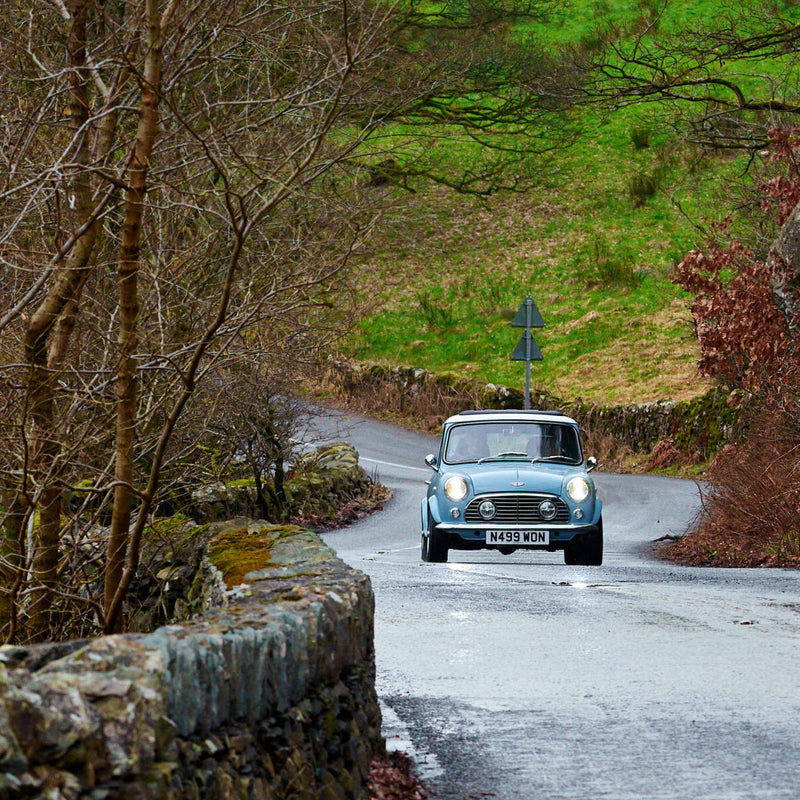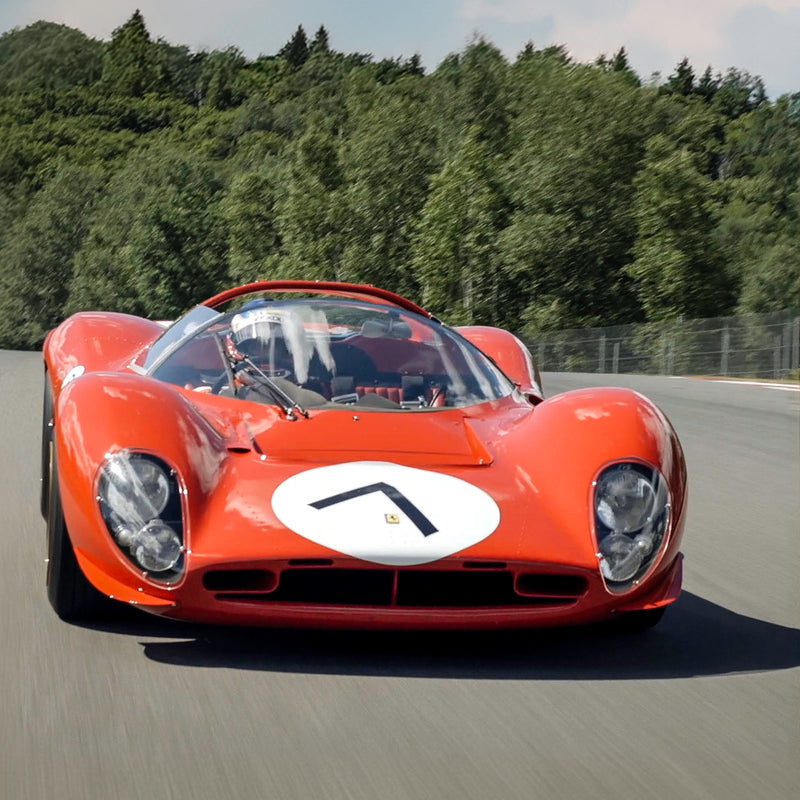The historical version of the Mille Miglia that begins its 37th running next week is no longer the pure and dangerous road race of endurance conceived of by its four founders, but it is populated exclusively with car models that participated in the original event's timeline (1927-1957), and as such it's a pretty damn good approximation of time travel—between the cars and the ancient cities they traverse on their way from Brescia to Rome and back again, this is as period-correct as classic road racing gets sans the pace that invariably kills people.
The modern reinterpretation of the Mille Miglia appears on many a car enthusiast bucket list for good reason(s), but it often remains an unchecked item because, put coyly, it's not cheap. Cars with winning histories at the original race can command tens of millions at auction, and though there was a healthy contingent of cheaper cars competing in the slower classifications in period, these are also quite pricey now, and are oftentimes obscure to the point of effective extinction. Point being, it's going to take a lot of patience or money to acquire some metal that's allowed to wear the official event meatballs on its doors (getting said car accepted is another story—it's best to enter multiple to ensure one gets in, according to those with more experience than myself in these matters). We all like to play the hypothetical game though, so I've gathered up five cars below (from five countries of origin, to keep things from tilting too Italian, as they often do in the context of the Mille Miglia) that you can reliably purchase for $300,000 or less.
With that said, let's start with the Italian option: the Lancia Aurelia. In one guise or another, the Aurelia has been one of the most popular cars at the historical Mille Miglia, and there are a range to choose from even though they were produced in the later years of the original race.




Alfa's ex-F1 man, Vittorio Jano, had moved over to Lancia in 1937, and shortly after the Second World War he got to work on the Aurelia, which would be powered by the first mass-production V6 engine (Jano would then move to Ferrari in the 1950s and continue to evolve his "Vee" engine designs). The initial sedan offering gave way to coupes and later spiders and a bevy of coachbuilt specials in between, and though the B20 GT Coupes are the most sought-after, the sedans offer a more budget-friendly option with similar style and specs. The sedans don't have that sexy door count, but there's something to be said about driving the route with three friends rather than a tolerant spouse who had a different concept of an Italian vacation in mind. B20 Coupes trade for roughly $100-200k depending on history and spec, while the B12 sedans typically fall somewhere between $40-80k. Apart from Brits Stirling Moss and Denis Jenkinson, the only winners of the original race not born in Italy came from Germany; Deutsche drivers only won it overall twice, and never in a Porsche, despite the competitiveness of the 550 Spyder. The Targa Florio proved to be infinitely more fruitful for Stuttgart.




But it's quite difficult to secure a ride in a 908/3 at the Florio isn't it? For slightly more achievable Italian road racing fantasies, there is hardly a better combination than an early 356A Speedster and the Mille Miglia.Half the point—or all of it, depending on whom you ask and/or which seat he's occupying in the car—of the modern event is to sightsee and "soak it all in," so there’s no point in obstructing the views with a roof. The first Reutter-bodied Speedsters may have been designed to sell in America (thanks in part to importer Max Hoffman of course), but they blend perfectly with the locales of the Mille Miglia. They aren't the rarest nor most exotic, but that's not a detractor is it? These cars will be all but wholly-known entities at any worthwhile classic-focused mechanics' shop (services of which you may need in the course of about 1,000 miles of driving in cars over half a century old), for-sale examples are more plentiful and far easier to evaluate than the more obscure Italian roadsters of the time, and you're sure to find some likeminded company over the course of the race. Plenty of 356 varieties are eligible to compete, but the 356A 1500 Speedster would be our choice for about $300k, and you can find examples trading a bit lower. Italian options abound, German ones are easy enough to find, but for the visiting Francophile there is a pretty noticeable dearth of French cars to enter with. A few Delahayes are allowed in, but it's a bit tricky to find any for sale at any given time, and on the other side of that spectrum, spending the better part of a week driving a 2CV isn't exactly appealing to anyone not already in love with that car.




Enter the DS, the forever-reigning paragon of French car design. Citroën's DS19 first came to the market as a 1955 model year, meaning there was a very short window in which it could compete in the Mille Miglia, but compete it did, and today you can enter 1955-1957 DS19s in the modern Mille Miglia. They are a bit trickier to find in these very early years (the DS was produced in one trim level or another for just about a decade), so expect to pay closer to $100k for the Mille Miglia-eligible years due to rarity alone. Find one though, and you'll have yourself a very unique experience at the race. The DS has a definition of comfort that is arguably still peerless (a modern massaging Maybach seat does nothing for the soul like plonking down in the back of a DS for the first time does), and the vibes put off by the avant garde styling and ride quality seem like the perfect complement to the scenery and the atmosphere of the Mille Miglia, and to the pace at which to best let the latter seep through the window. What end-of-day fatigue? Prefer an English element? Have a chunkier bit of change burning a hole in your britches? Aston Martin DB2s can be consistently bought between $120-350k (depending, as always, on provenance and spec and condition), and you can find works cars from time to time in the $500k+ range if you answered yes to the second question.




The DB2 might not have the Bond appeal or general aesthetic grace of the later cars bearing David Brown's initials, but it's still a looker, still a competitor, and perhaps an even more significant piece of Aston's history than what was churned in its wake. It's called the DB2, but it was the first of the lot to bear the DB designation, and it was the first Aston Martin with an inline-six (the 2.6-liter "Lagonda" motor that was designed in part by W.O. Bentley, who also founded I'll let you guess which car company). After some teething, the DB2 won its class at the 1950 24 Hours of Le Mans, the same year the road car was produced. It was almost entirely phased out of Aston's competitive roster only three years after it was unveiled to the world, but in 1952, the year before the DB3 took over, the DB2 took first and second in class honors at the Mille Miglia, adding another trophy to its impressive and quickly-assembled collection. Driving a DB2 in the modern Mille Miglia is a way to relive the car's rather brief competitive history, but more than that, it is a means to experience the nascent years of European GT cars. Moving to the last pick in this list, we are brought back to the earliest years of the race itself. Whereas most the above cars populated the entry lists of the Mille Miglia's final years, Chrysler had history with the race stretching back to its second-ever running.




As the story goes, Benito Mussolini was adamant that the "Four Musketeers"—Aymo Maggi, Franco Mazzotti, Giovanni Canestrini, and Renzo Castagneto—repeat the challenging road race they'd set up the following year. The second edition attracted more Italian entrants than the already-popular inaugural one, and it also saw some increased foreign attention, mainly from the French in the form of a strong Bugatti effort, but also from the Americans who were represented by marques La Salle and Chrysler. Chrysler was all but brand-new at the time, but thanks to the company buying into a well of talent led by former Studebaker engineering chief Frederick Zeder, they had some formidable cars to race abroad in Europe. The 4.1-liter inline-six saw the 70-series Chryslers taking 3rd and 4th overall at the 24 Hours of Le Mans in 1928, as well as a class win at the Mille Miglia in the following year. So if you're into the older stuff, and want to stand out at the 2020 event, the Chrysler 72 or 75 (pictured here), are compellingly odd, and though the market is more viscous than liquid, can be found for less than $100k.
Images courtesy ofHemmings, RM Sotheby's ,Lancia ,Porsche , andCitroën




















































